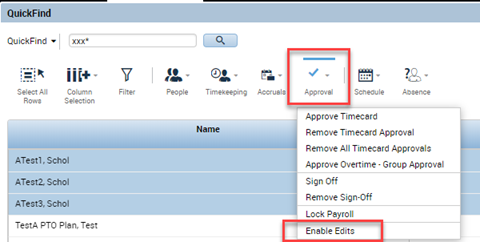You know you need an experienced consulting partner to get you up and over the Kronos hurdles constantly affecting your workflow. But getting upper management to greenlight your plan will require a strong business case. Where do you begin?
Depending on the structure of your organization, there are several different paths that could get you to yes. We’ve distilled this process into five basic steps to give you an overview and cheer you on in the approval journey ahead.
Getting Your Kronos Consulting Plan Approved
Establish the Link to Business Needs
To make your business case to upper management, continually focus on establishing the link between your request and the organization’s business needs. As an IT or HR manager, you must use your budget as a management tool to communicate how your request addresses specific business needs. To do this, clearly define the problem you’re trying to solve, research the business need associated with it, and begin to build your business case.
For instance, you might suggest your project will:
- Increase revenue
- Reduce labor costs
- Improve productivity
- Improve client satisfaction
Understand Budgeting Building Blocks
Demonstrate to upper management that you understand the key building blocks of the budgeting process. These blocks include Operating Expenses, Capital Expenses, Cost Center, and Expense Categories. Know the category into which your consulting request falls and how to cost-justify it. Additional consulting to implement, optimize, or upgrade your Kronos capital expenditure most likely falls into the categories of Operating Expenses or Capital Expenses. Depending on the specifics of your organization's budget, you may be able to shift the budget or prioritize differently in order to get the resources your project requires.
For instance, you might cost-justify by suggesting your project will:
- Improve efficiency
- Boost employee engagement
- Reduce timekeeping errors
- Increase the automation of tasks
- Address compliance requirements
Seek Approval from Stakeholders
To build a business case for additional consulting around your WFM capital expenditure, you will need to gain approval from all stakeholders. Solid preparation and constant, clear communication to all stakeholders will be critical. Be careful: When making the case for additional technology requirements and benefits of a Workforce Management (WFM) system, it’s easy to get overly technical and lose your audience. Be mindful to focus on the business needs driving your project. Frame your project in the terms your stakeholders care about such as improved efficiency, reduction of compliance risk, or growth in revenue.
Calculate ROI
Ultimately every request comes down to dollars. When presenting your business case, include how long you expect it will take for your project to pay for itself. There are four ways to calculate ROI—break-even analysis, payback period, net present value, and internal rate of return. In those numbers will be direct savings (hard costs, labor, hardware etc.) and indirect savings (customer satisfaction, employee engagement). Decide what method your stakeholders will respond to and present that.
For example, you might calculate ROI with a graphic like this:

Think Strategically
All IT/HR budgets should be driven by the company’s business strategy, which provides common goals across all business units and departments. If there isn’t a clear business strategy in place (and 50% of all organizations lack one), establish a proxy strategy that reflects key assumptions about enterprise revenue growth, pricing, and the availability of critical resources. Demonstrate how your IT/HR request is the best solution in meeting relevant, timely strategic goals.
In Closing
Keep in mind: passion (or panic) doesn’t get approved; it’s the benefit-to-cost ratio that moves the needle with upper management. Clearly demonstrating that your project plays directly into the company’s overarching business goals is key to getting your project approved.